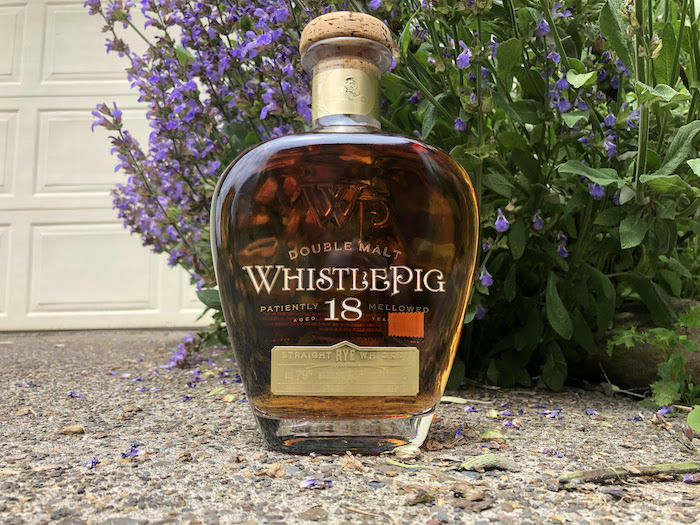Editor’s Note: This whiskey was provided to us as a review sample by WhistlePig. This in no way, per our editorial policies, influenced the final outcome of this review. It should also be noted that by clicking the buy link towards the bottom of this review our site receives a small referral payment which helps to support, but not influence, our editorial and other costs.
Vermonters take their locally made products seriously, and booze is no exception. You’re unlikely to find better beer, cider, cheese, or meat sold from Coleman coolers and card tables at the nearest farmers’ market. Sure, the wines may not be vinifera, but this is the state that forced McDonald’s to serve real maple syrup.
When I visited a certain Vermont farmers’ market ten or so years ago, I met two dapper gents hawking bulbous whiskey bottles labeled WhistlePig that looked like they just left a casting call for “Oh Brother, Where Art Thou?” How did it taste? Incredible. Here was RYE. This was lush and fruity, spice-driven and sweet, silky and fiery, and supremely sip-able. And local? Even better. Well, about that…
In 2008, Raj Peter Bhakta purchased an old dairy farm in Shoreham, Vermont, and set about figuring out what to do with it. An entrepreneur, then semi-famous after a stint on reality TV, Bhakta ran through a mental checklist of fermentable options before settling on rye whiskey. Wanting to hit the ground running, Bhakta partnered with the legendary David Pickerell, of Marker’s Mark fame.
Pickerell had discovered an incredible Canadian rye whiskey. He knew it was head and shoulders above the typical American’s understanding of Canadian rye; what he needed was the right marketing partner to sell this gem for what it was truly worth. Together, Bhakta and Pickerell released WhistlePig’s 10 Year Rye to the world in 2010, wowing reviewers and the public. Bienvenue en Nouvelle-Angleterre, mes aimes canadiens!
Since 2015, WhistlePig has been distilling its own rye in house (I should say, in barn) and aging in wood harvested from the over 450-acre farm. So far, only select releases are completely from Vermont. The company, despite the loss of Pickerell and the contentious departure of Bhakta, still sources rye from our friends up north for most of its releases, including the WhistlePig Double Malt 18 Year Straight Rye, first released in 2019.
The third edition of the WhistlePig Double Malt 18 Year Rye Whiskey, reviewed here, was reportedly distilled at Alberta Distillers Ltd. Unusual for most rye whiskies, and for WhistlePig’s other releases, this whiskey includes a small amount of malted rye. Before industrial processes were invented, this was used to help commence fermentation. It’s said to add nuance and depth to the rye spice.
The mash bill is the same as the original release, which the current master blender, Pete Lynch, explained in a press release that “These grains form a harmony that spans the flavor spectrum, at once soft and floral, rich and savory, and full of spice.”
When asked to review the WhistlePig Double Malt 18 Year Rye Whiskey, I was both intensely interested and a little hesitant. What if, after all these years, all these changes to my palate, and my stubborn Yankee definition of the term “local,” something no longer resonated? Let’s find out.

Tasting Notes: WhistlePig Double Malt 18 Year Rye Whiskey
Vital Stats: Aged 18 years in new oak, 46% ABV, mash bill: 79% rye, 15% malted rye, 6% malted barley, SRP $399/ 750ml bottle.
Appearance: In the glass, this is moderate golden amber with a yellow-green undertone.
Nose: There’s a subtly to the opening aromatics. It first shows hints of nail polish and shoe polish, suggestive of a faint yet controlled oxidation. These more chemical notes recede with air and develop into notes of toasted walnuts, baseball glove, and lightly toasted rye bread. There’s a floral quality reminiscent of fresh lychee and dandelions. I can detect notes of caramel popcorn, tangerine peels, and cherry pits. There are layers of aromatics that develop over time, which is quite impressive.
Palate: The whiskey is silky and delicate on the palate, seeming to evaporate on the tongue. There’s a gentle astringent character to palate, which gives it a suggestion of texture. In the mouth, the aromas are sweet and floral, with a spiciness that builds on the palate into waves of star anise, cinnamon, and white pepper. The finish, though not long lasting, shows notes of roasted corn, red cherries, vanilla marshmallows, and candy corn. Water opens up the aromatics into rose petals and freshly baked pumpernickel.








